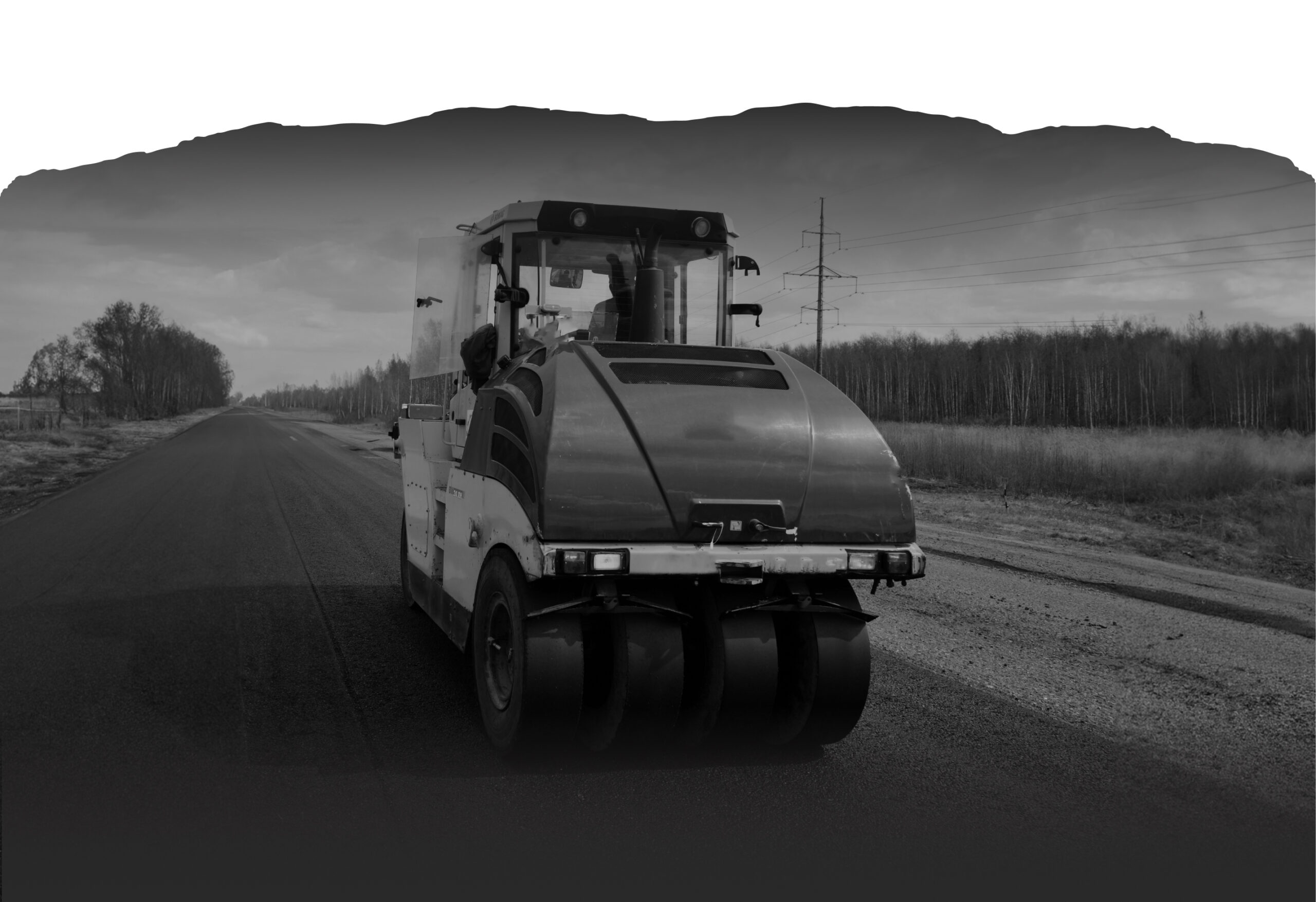The Evolving World Of Asphalt Maintenance

Innovations In Asphalt Maintenance
Asphalt maintenance is ever evolving in response to a number of factors, and governments and agencies are having to follow suit to keep up with the changing world of asphalt maintenance. Environmental concerns are highlighting the need for more sustainable and cost-effective solutions, shifting the industry’s needs and expectations towards making a reduction in our carbon footprint and inspiring a shift in values industry wide. Recent advancements in technology are integrating the use of smart technologies to improve maintenance efficiency and longevity for our road systems across the board. The use of Pavement Management Systems (PMS) is also rapidly growing, these systems help prioritize maintenance and repair projects based on the condition of the roads and available budgets. Asphalt mixes are also being developed with improved materials and mixtures for better durability, weather resilience, and resistance to wear and tear. Innovations in asphalt maintenance are continually being implemented to improve cost-efficiency, sustainability and integrate with advancements in technology, providing us with safer and smoother transportation networks. In this article we will take a look at some of these integrations in more detail and their impact on the industry.
Predictive Analytics
Predictive analytics in asphalt maintenance enables proactive rather than reactive maintenance, resulting in safer and more reliable transportation networks everywhere you find paved areas. Data collection is the foundation of predictive analysis. These data sources include; historical pavement condition data, weather data, traffic data, and maintenance records. Today, pavement inspection vehicles can be equipped with modern technologies like sensors and cameras to automate data collection. The way predictive models work are by forecasting the future condition of asphalt surfaces, predicting when maintenance activities will be required, and estimating the rate of pavement deterioration. These models are also used to identify areas that are at high risk of pavement failure or damage due to factors like heavy traffic, weather conditions, or inadequate drainage, allowing proactive measures to be taken in order to mitigate these risks. By understanding the future condition of pavement assets, we can develop long-term asphalt maintenance and rehabilitation plans that ensure the sustainability of road networks and all types of paved areas.
Drones For Inspection
Drones are revolutionizing the way road infrastructure inspections are conducted with the ability to provide cost-effective, rapid, and accurate assessments of all types of maintenance requirements. They are becoming a valuable asset for transportation agencies and organizations responsible for managing road networks around the world. Drones are equipped with high-resolution cameras and sensors that capture detailed aerial images and videos to provide a birds-eye-view of the entire road network, including roads, bridges, tunnels, and other critical assets. While traditional aerial surveys involve renting and operating aircrafts, drones employ none of these added costs. Requiring fewer personnel and maintenance costs, drones are in fact an affordable alternative for routine inspections. Drones can capture high-quality images and videos that can create 3D models of infrastructure providing valuable insights into the structural integrity and conditions of areas requiring asphalt maintenance. There have been a number of notable advancements in road construction materials and smart technologies that have the potential to reduce asphalt maintenance costs in many ways. Smart Road Technologies are a major advancement in the world of asphalt maintenance and are being integrated into road construction materials to monitor road conditions, provide real-time data on traffic and weather, and facilitate predictive maintenance. Machine learning and predictive analytics are used to forecast when road maintenance is needed based on historical data and current conditions, aiding in efficient planning and allocation of resources. Similarly, Engineers are developing advanced pavement designs that consider factors like traffic loads, climate conditions, and available materials to optimize road performance and longevity. Road Condition Monitoring Systems use sensors, cameras, and other monitoring devices to continuously assess road conditions making them able to detect issues like cracks, potholes, and surface wear. Collectively, these technologies can help enhance road safety, schedule timely repairs, and prevent accidents, while reducing maintenance costs.
Natural Materials
You may think that asphalt is a natural material because it comes from rock, however, with further investigation you will find that almost all asphalt products are rocks actually coated with a whole slew of toxins and additives. The base composition for RockAsphalt is natural limestone rock infused (through volcanic reaction) with bitumen. Not only is it durable, flexible, and sustainable, it is the only product that is comprised of 100% Natural materials with no toxic additives, or additives of any kind. Our “oil” (bitumen) is INSIDE of the rock. It was forced there through massive volcanic pressure. It is the only mineable deposit for this material in our 1/2 of the world. It is by nature extremely unique. In an attempt to replicate our product, asphalt producers began to manufacture cold mix. Since they can’t impregnate the rock with natural asphalt, they resorted to dumping tar on it. So, even though the rock itself is considered natural, the product as a whole is most certainly not – it’s artificial.
Eco-Friendly Asphalt Maintenance
Eco-friendly asphalt maintenance practices and sustainable technologies are gaining traction as awareness and understanding of our environmental impact increases, along with the desire to make decisions that reflect positive changes. RockAsphalt is naturally impregnated asphaltic rock, formed by massive amounts of volcanic pressure forcing natural oil deposits into the rock layer. Its use has the ability to decrease our carbon footprint as it doesn’t require the usage of high-impact equipment that hot mix does for both production and application. Another unique property to RockAsphalt is its continual bonding. Heavy traffic only strengthens repairs as they compact, reducing road maintenance frequency, further reducing carbon emissions and the impacts associated with regular road repair. In an effort to reduce air pollution and greenhouse gas emissions associated with road maintenance activities, low impact equipment is becoming a more popular choice among companies and government agencies. Of course, proper waste management ensures that construction and asphalt maintenance waste, including debris and hazardous materials, are disposed of or recycled responsibly. When a combination of these practices are put into place, we are able to effectively reduce the carbon footprint associated with traditional road construction materials and maintenance approaches.
Community Involvement
Community involvement is another great way to lower costs and improve outcomes in asphalt maintenance. Community members can serve as members of the team by monitoring road conditions and reporting issues promptly, and this early detection of problems can prevent costly repairs later like potholes, fallen trees, or blocked drainage systems. Timely response can prevent minor problems from escalating into major repairs, reducing overall maintenance costs in the future. In some cases, communities may engage in fundraising efforts to support road maintenance projects in which the funds can help supplement government budgets, allowing for more extensive maintenance work. Mobile Apps empower citizens to actively participate in road maintenance by reporting issues in real time. These apps facilitate communication between citizens and government agencies. Real-time reporting allows for more effective prioritization of maintenance planning and drastically reduces response times.
Embracing Change
The key to successful asphalt maintenance lies in embracing these changes, adopting innovative practices, and ensuring collaboration among government agencies, communities, and the private sector. In doing so, we can create road networks that are more resilient, sustainable, and cost-effective while meeting the evolving needs of our communities and the environment.

Ready to do road repairs the fast & easy way?
RockAsphalt© replaces cold and hot mix making road repair of all sizes fast, clean, simple and permanent the first time.
Try it for yourself and learn why crews love it.
Get your free sample bags and have your team see how fast and easy it is to permanently fix potholes.


